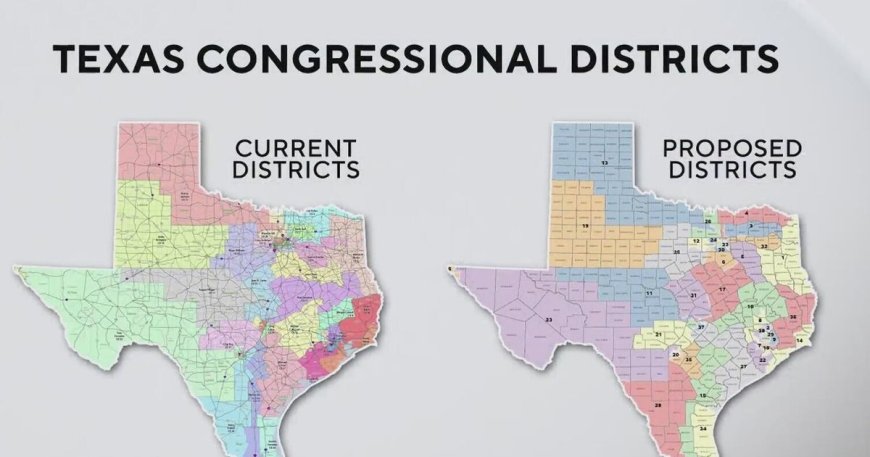Texas Senate Approves Trump-Backed Redistricting Bill: What It Means for GOP Control and Legal Challenges Ahead
Texas Senate passes Trump-backed redistricting bill, reshaping districts for GOP advantage. Legal challenges loom over voting rights and minority representation.

Austin, Texas — Tuesday, August 27, 2025 — The Texas Senate on Tuesday approved a sweeping redistricting bill championed by former President Donald Trump, a move that could significantly shape the balance of political power in upcoming elections. The legislation, passed after hours of debate, now heads to Governor Greg Abbott’s desk for final approval.
The measure redraws congressional and state legislative districts in ways analysts say bolster Republican prospects of maintaining control of the U.S. House in 2026. Critics, however, argue the maps dilute the voting power of urban and minority communities, setting the stage for an inevitable wave of legal battles.
The Road to Passage
The redistricting proposal gained momentum earlier this summer when Trump endorsed the maps during a rally in Houston, framing them as “a safeguard against radical Democrats.” Republican lawmakers, citing population growth in rural counties, defended the bill as a “fair reflection of Texas’ demographic shifts.”
Democratic senators walked out of the chamber at one point in protest, but the GOP majority ultimately prevailed in a late-night vote. According to Reuters, the bill passed 20–11, along party lines.
Key Changes in the New Maps
-
Urban vs. Rural Divide: The maps expand Republican-leaning districts in suburban areas while consolidating Democratic strongholds in Houston, Dallas, and Austin.
-
Minority Voter Impact: Latino and Black advocacy groups argue the new boundaries reduce minority representation despite these communities fueling much of Texas’ population growth over the last decade.
-
House Power Math: Analysts estimate the maps could deliver Republicans up to three additional U.S. House seats, reinforcing Trump’s strategy for a GOP majority under his presidency.
Interactive simulations by political researchers suggest these shifts could tilt statewide voting outcomes by as much as 3–5 percentage points in favor of Republicans, enough to secure control in closely contested elections.
Legal Challenges on the Horizon
Civil rights groups have already announced plans to file lawsuits, pointing to the Voting Rights Act and alleging racial gerrymandering. NPR reported that legal teams are preparing to argue that the maps intentionally weaken minority voting power, particularly in Harris County and along the U.S.-Mexico border.
Experts note that similar challenges in previous cycles dragged through the courts for years, sometimes resulting in maps being struck down or revised mid-decade.
“History tells us that these maps won’t be the last word,” said Mark Jones, a political science professor at Rice University. “The courts are almost certainly going to get involved, and Texas will once again become a national battleground for redistricting law.”
Broader Implications for U.S. Politics
With Trump actively campaigning for Republican control of Congress, Texas’ redistricting bill underscores the strategic role of state legislatures in shaping federal outcomes.
If upheld, the maps could provide Republicans with a decisive edge in the 2026 midterms, complicating Democrats’ path to retake the House. It also raises larger questions about the role of gerrymandering in a democracy, particularly when demographic trends suggest a more competitive Texas in the long run.
Public Reactions
Reactions from Texans have been polarized. Supporters at a rally in San Antonio praised the bill as “protecting conservative values.” Opponents gathered outside the Capitol, chanting “Our votes matter,” and calling for federal oversight.
Social media responses echoed the divide: some conservative commentators hailed the legislation as a win for “election integrity,” while progressive groups warned it could further erode public trust in democracy.
Looking Ahead
Governor Abbott is expected to sign the bill into law by the end of the week. Once enacted, the maps would take effect for the 2026 elections, though looming court battles may delay their implementation.
As Texas continues to grow and diversify, the fight over who gets to draw the lines — and who gets to hold power — is far from over.














